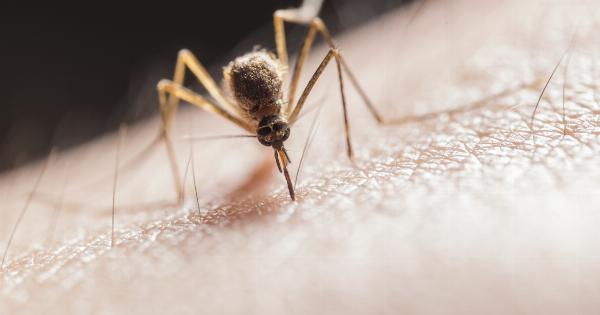Scleroderma and Morphea are two autoimmune diseases that affect the skin and connective tissues. While they share some similarities, they also have distinct characteristics that set them apart.
In this article, we will explore everything you need to know about these conditions, including their causes, symptoms, diagnosis, and treatment options.
What is Scleroderma?
Scleroderma, also known as systemic sclerosis, is a chronic autoimmune disease that causes an overproduction of collagen in the skin and other body organs. This excess collagen leads to hardening, thickening, and tightening of the skin.
Scleroderma can also affect blood vessels, muscles, and internal organs such as the lungs, heart, and kidneys.
Types of Scleroderma
There are two main types of scleroderma:.
1. Limited Cutaneous Scleroderma
Also known as CREST syndrome, limited cutaneous scleroderma primarily affects the skin of the hands, face, feet, and lower arms.
It is characterized by Raynaud’s phenomenon (spasm of blood vessels in response to cold or stress), calcium deposits, esophageal dysfunction, sclerodactyly (thickening and tightening of the skin on the fingers), and telangiectasia (dilated blood vessels).
2. Diffuse Cutaneous Scleroderma
Diffuse cutaneous scleroderma affects a larger area of the skin, often involving the upper arms, thighs, chest, and abdomen. It progresses more rapidly and affects internal organs earlier than limited cutaneous scleroderma.
Symptoms may include skin thickening, joint pain, muscle weakness, gastrointestinal problems, and lung complications.
Causes of Scleroderma
The exact cause of scleroderma is unknown. However, researchers believe it involves a combination of genetic, environmental, and immune system factors.
Certain genes may make individuals more susceptible to the disease, while exposure to certain toxins or infections may trigger its development. The immune system abnormalities observed in scleroderma cause inflammation and excessive collagen production.
Symptoms of Scleroderma
Common symptoms of scleroderma include:.
– Hardening and tightening of the skin.
– Thickening of the fingertips or toes.
– Raynaud’s phenomenon.
– Digestive problems such as acid reflux and difficulty swallowing.
– Shortness of breath and dry cough.
– Joint pain and stiffness.
– Fatigue.
Diagnosis of Scleroderma
Diagnosing scleroderma involves a combination of medical history, physical examination, and various tests. Skin biopsies may be performed to examine the affected tissues under a microscope.
Blood tests may check for specific antibodies commonly found in scleroderma patients. Imaging tests, such as X-rays or CT scans, can help evaluate organ involvement.
Treatment for Scleroderma
There is no cure for scleroderma, but treatment options aim to manage symptoms, prevent complications, and slow down disease progression.
The approach may involve a combination of medications, physical therapy, occupational therapy, and lifestyle modifications. Medications commonly prescribed include immunosuppressants, vasodilators, and medications to manage specific symptoms or complications.
What is Morphea?
Morphea, also known as localized scleroderma, is a skin condition characterized by patches of hardened and discolored skin. Unlike systemic sclerosis (scleroderma), morphea primarily affects the skin and does not involve internal organs.
Types of Morphea
There are several subtypes of morphea:.
1. Circumscribed Morphea
Circumscribed morphea causes oval or round patches of thickened, waxy skin that may be reddish or purplish in color. These patches often have a lighter center and a darker border.
They can range in size from a few millimeters to several centimeters, and they may shrink or fade over time.
2. Generalized Morphea
Generalized morphea causes larger patches of hardened skin that may spread to different parts of the body. The patches are typically asymmetrical and may have a white, yellow, or ivory appearance.
When this type of morphea affects the face, it is referred to as “en coup de sabre” and can cause facial deformities.
3. Linear Morphea
Linear morphea involves a single line or band of hardened skin that usually follows the course of a nerve or blood vessel. This type of morphea can affect large areas of the body, often extending from an arm or leg to the trunk.
It may cause mobility issues or joint contractures if it crosses a joint.
Causes of Morphea
The exact cause of morphea is unknown, but it is believed to involve an autoimmune response triggered by genetic and environmental factors.
Abnormalities in the immune system lead to inflammation and excessive collagen production, resulting in the characteristic skin changes seen in morphea.
Symptoms of Morphea
The signs and symptoms of morphea can vary depending on the subtype. Common symptoms include:.
– Patches of hardened, thickened skin.
– Discoloration or changes in skin tone.
– Itching and pain in the affected areas.
– Restricted mobility or joint stiffness.
– Rarely, underlying muscle and bone abnormalities.
Diagnosis of Morphea
Morphea is typically diagnosed based on its characteristic appearance and clinical examination. A skin biopsy may be performed to rule out other conditions and confirm the diagnosis.
Blood tests may be conducted to assess the overall health of the patient and detect any autoimmune markers.
Treatment for Morphea
Although there is no cure for morphea, treatment options are available to manage symptoms and improve skin appearance. Treatment aims to reduce inflammation, soften the skin, and prevent new patches from forming. Some commonly used treatments include:.
– Topical medications (such as corticosteroids).
– Phototherapy.
– Physical therapy.
– Immunosuppressive medications (for severe cases).
– Surgery (in rare cases to address complications).





























